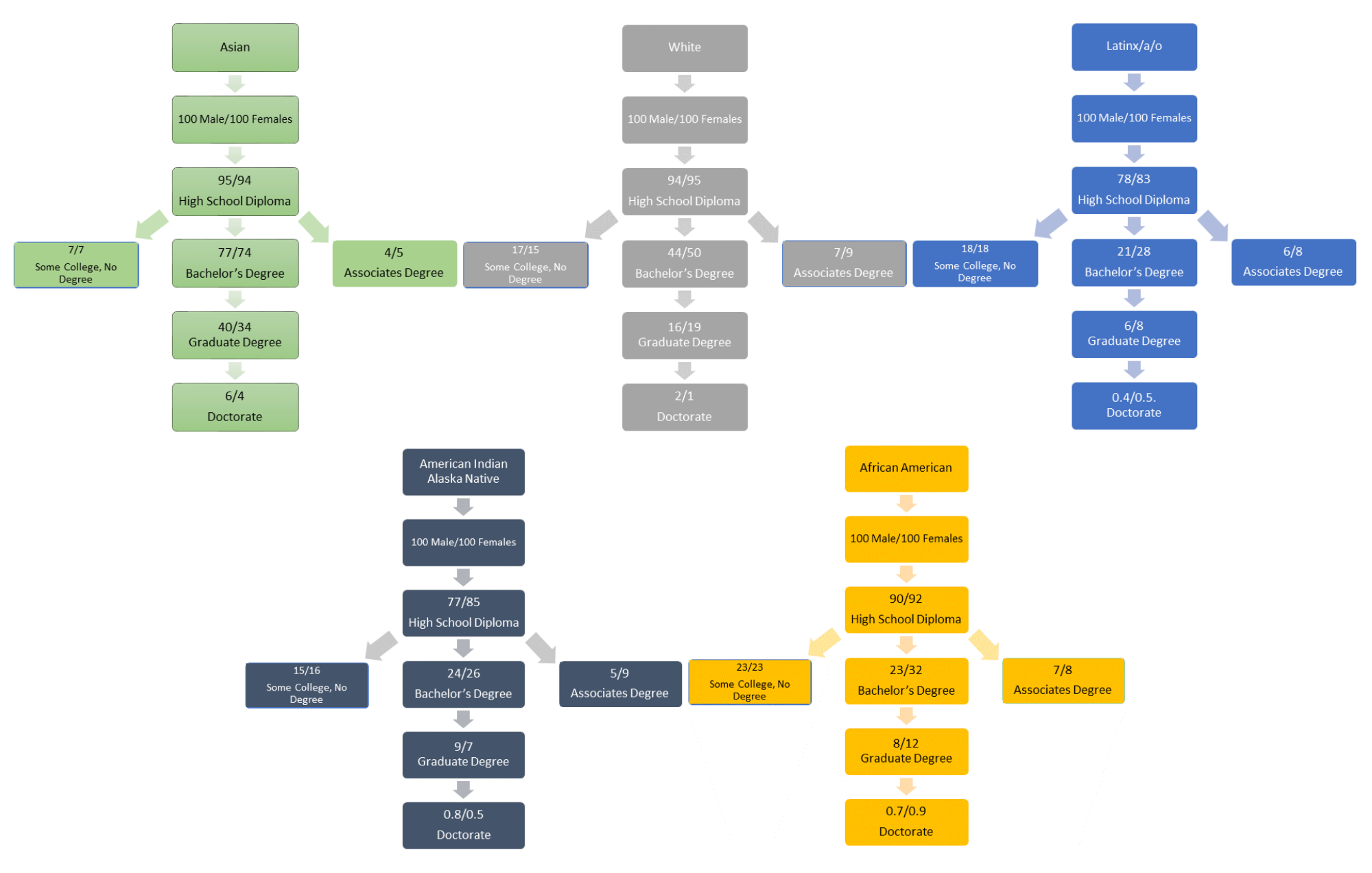By Nichole M. Garcia, Ph.D.
To fuel the U.S. economy, a high school diploma is no longer enough in terms of educational attainment. The Lumina Foundation projects that more than 60 percent of adults in the U.S. need a college degree or credential of value beyond a high school diploma. The Lumina Foundation reported that in the U.S. 48 out of 50 states have implemented state policies to increase higher education attainment to assist in the nation’s economic growth. In the state of New Jersey, this initiative is called New Jersey’s 65 by ’25: Many Paths, One Future campaign. In 2016, The New Jersey Combined State Plan for the Workforce Innovation and Opportunity Act (WIOA) proposed and committed to a goal that 65 percent of the state’s working-age adult population will complete education beyond a high school diploma by the year 2025. This goal is especially focused on increasing higher educational attainment rates in support of racial and gender equity.
In 2019, the State of New Jersey Office of the Secretary of Higher Education published a report titled, “Where Opportunity Meets Innovation: A Student-Centered Vision for New Jersey Higher Education.” Within that report, former Secretary of Higher Education Zakiya Smith Ellis stated, “Students today need affordable postsecondary options, as well as consistent support to get to – and through – college. They also need to know that every postsecondary path in the state will prepare them for what comes after graduation…every New Jerseyan [will need] the opportunity to obtain a high-quality credential that will allow them to succeed in life.”
As outlined in the plan, every New Jerseyan needs access to post-secondary pathways that can lead to a high-quality credential. It is significant to note that post-secondary pathways vary, and credentials can be inclusive of a college degree, certificate, or certification. Post-secondary institutions differ by type such as two-year or four-year institutions, private or public, for profit or not-for-profit institutions, or minority serving institutions. What pathways students choose to pursue is also influenced by socio-historical contexts, socioeconomic status, parents’ level of education, race/ethnicity, gender, and/or age. As a state, we are committed to the 65 by 25 initiative to boost the economic growth of New Jersey, and to improve the overall quality of life for our residents.
Overall, as a nation, the Lumina Foundation reports that in 2021 the educational attainment rate for adults ages 25-64 is at 53.7%, a figure which included 3.7% of adults with a certification, 4.3% with a certificate, 9.2% with an associate degree, 22.7% with a bachelor’s degree, and 13.8% who have completed a graduate or professional degree. As the state works towards meeting its goal, it is important to explore educational attainment across the educational pipeline taking into consideration race/ethnicity and gender. The educational pipeline model is useful for presenting data, revealing trends, and showing progressive patterns of educational attainment across different racial/ethnic and gender groups.
Figure 1. The New Jersey Educational Pipeline, by Race/Ethnicity and Gender, 2021
Source: The American Community Survey 5-Year Estimates Public Use Microdata for 2021, compiled by the U.S. Bureau of the Census.
Note: The number on the left represents males, the right, females.
Figure 1 illustrates educational attainment among the five major racial/ethnic groups of adults ages 25-64 in New Jersey in 2021. Using African Americans as an example, the figure illustrates that out of every 100 male and 100 female African American elementary school students, 90 males and 92 females graduated from high school, 23 males and 23 females pursued college without completing a degree, while 7 males and 8 females were awarded an associate’s degree, 23 males and 32 females received an undergraduate degree, 8 males and 12 females graduated with a master’s or professional degree, and fewer than 1 graduated with a doctorate degree. Overall, African American females are outpacing their male counterparts in terms of educational attainment, except when it comes to the often overlooked, yet alarming category of “some college, no degree.” This category accounts for almost one-quarter of both male (n=23) and female (n=23) African American students from that original pipeline of 100 elementary school students – far outpacing students from other racial/ethnic groups in this unenviable stage of incompletion.
It is evident that the “some college, no degree” category matters – especially for New Jerseyans who are African American, Latinx/a/o, White, and American Indian/Alaska Native. It is more important than ever that we support this population of adults in attaining a high-quality education credential in the state, as they are our future.
Nichole Garcia, Ph.D. is an Assistant Professor of Higher Education at the Graduate School of Education at Rutgers University.


